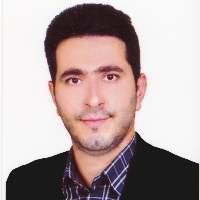Monitoring and predicting land use changes using landsat satellite images by Cellular Automata and Markov model (Case study: Abbasabad area, Mazandaran province)
Background and Objective:
Today, land use change in many countries has become an important challenge that has many effects on the environment. Accordingly, the study of land use change at different scales is one of the important issues in the proper management of natural resources and environmental change at various levels. Therefore, being aware of land use changes and investigating their causes and factors in several time periods, and predicting land use changes in the future can be properly planned to reduce adverse effects, which has been considered by planners and city managers. They help in land use planning. Also, converting land uses to each other and changing the use of vegetation is known as an important issue. Therefore, the purpose of this study is to monitor and predict land use changes and land cover in Abbasabad urban area in the future; Using these changes, appropriate management measures can be taken to preserve and rehabilitate lands.
Materials and Methods:
A combination of an automated cell model and Markov chain in the Abbasabad urban area was used to predict land use change; The relevant images were taken from the TM and OLI sensors of the Landsat 8 and 5 satellites at the USGS site. Four user classes, including zone class built with code number 1, vegetation class with code number 2, water resources class with code number 3, and barren land class with code number 4, were separated for Abbasabad urban area. Obtained USGS. In order to extract land use classes, after checking several methods, object-oriented classification method and support vector machine (SVM) algorithm were used due to better efficiency. Evaluation of Babian satellite imagery classification The overall accuracy and kappa coefficient were performed for three periods of time. Each of these classified maps was evaluated by drawing an error matrix. 250 sample points were used to prepare this matrix. The type of sampling was stratified sampling. Also, to determine land use changes in 2030, classified maps were used and with the help of TerrSet software, changes made in classes and their percentages were obtained, and using the CA-MARKOV model, changes of different classes based on matrices. The possibility of transfer was predicted.
Results and Discussion :
The results during 1997, 2006, and 2017 show that the constructed area has an increasing trend and the uses of vegetation, barren lands, and water resources have a decreasing trend and 23279 hectares of lands in the region are built area dedicated. The kappa coefficient calculated for 1997, 2006, and 2017 is 0.86, 0.89, and 0.89, respectively. Markov chain forecasting model with 85% accuracy stated that the trend of land use change for 2030 will be the same as in previous years, and this indicates that the conversion and change of land uses will proceed as before, and it is necessary to mention this point that the identical uses of vegetation to vegetation cover the largest area during the years 2006 to 2017, and this shows that in this area, vegetation is still stable and has undergone less changes.
Conclusion :
The output of the 13-year forecast map for 2030 in this study indicates the appropriate accuracy of the CA-MARKOV model. In addition, this output shows that this method can be trusted for short-term planning. These forecast maps can be a good guide for managers and urban planners. To achieve better results, it is recommended to use a combination of automated cell model and Markov chain to monitor and predict changes nationwide. The results of this study, in addition to helping to reduce the volume of input data, but also in the processing of classified images and in predicting them for the future.
- حق عضویت دریافتی صرف حمایت از نشریات عضو و نگهداری، تکمیل و توسعه مگیران میشود.
- پرداخت حق اشتراک و دانلود مقالات اجازه بازنشر آن در سایر رسانههای چاپی و دیجیتال را به کاربر نمیدهد.




